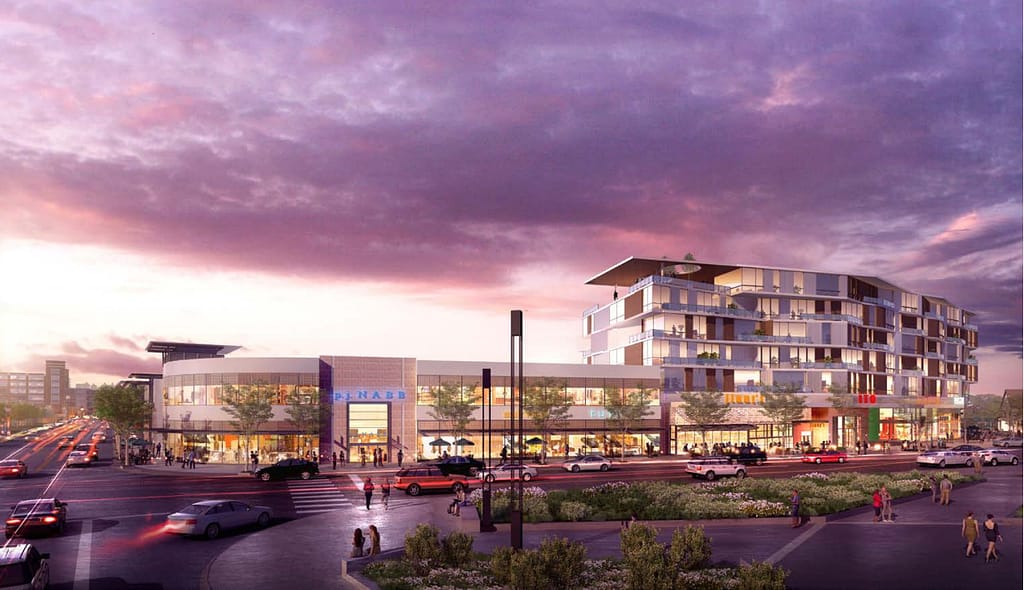
During yesterday’s City Planning Commission meeting, Commissioners approved a zoning change that will allow for housing to be built at the Giant Eagle Shakespeare site next to the East Busway Station.
Before the vote was taken, Pittsburghers for Public Transit’s Community Organizer, Josh Malloy, and Director, Laura Wiens, gave testimony to talk about the importance of a site like this in building equitable transit-oriented communities. They joined affordable housing advocates and residents to call for a development that includes affordable housing and free transit for residents.
The zoning change is an important first step to building the equitable transit-oriented communities that we need to combat crushing traffic congestion, climate change, and our City’s housing crisis. In the coming weeks, PPT will continue to work with residents, advocates, and political leaders to encourage a development that better aligns with all of these goals. The goal is that by the time this development comes before City Council for approval, the developer has agreed to build less structured parking and direct the savings to increase housing affordability and provide free transit passes.
We need your voice in this campaign. Please reach out to get involved.
Check out this recent news coverage about the development:
WESA: “Redevelopment Of The Shakespeare Street Giant Eagle Heads To Pittsburgh City Council“, Margaret J. Krauss
…
Housing advocates urged Echo Realty and their partner Greystar to double the number of affordable units.
“We have been encouraged by the conversations we’ve been able to have” with the developers, said Celeste Scott, housing justice organizer for Pittsburgh UNITED. “We do think that this affordability target in a place like East Liberty, where there has been so much historical harm, is not asking too much.
Representatives from Pittsburghers for Public Transit proposed a way to pay for the increased affordability: reduce the planned amount of parking and use the savings to subsidize more units and provide transit passes.
“This is an opportunity to address several needs,” said Joshua Malloy, PPT’s community organizer. “Pittsburgh’s affordable housing crisis, congestion in East Liberty and Shadyside, underutilization of public transit in the area, and overbuilding of parking.”
Malloy cited a 2018 analysis by Jeanne Batog, a University of Pittsburgh graduate student, that found nearby parking lots experience 40 percent vacancy during peak hours.
….read the rest here
Pittsburgh City Paper: “Pitt paper shows parking spaces near East Liberty busway station are underutilized by 30 percent“, Ryan Deto
…..
Wiens says future developments in the area should be focusing on housing density and trying to limit the number of parking spaces built.
“It is a big opportunity,” says Wiens. “We need more density. It will encourage more people to use [transit]. When you build more parking, you [give] incentive for more cars to come into the neighborhood.”
Wiens also notes there is a lot of money that developers set aside for parking spaces. A paper by PPT argues that Shakespeare developers could save $4.6 million if they lowered the number of parking spaces to align with the zoning minimum requirements in East Liberty, which are one parking space for every two housing units. (The Shakespeare proposal is technically in Shadyside, where minimums are higher, but developers have convinced city officials to agree to a variance to lower them before.)
A 2014 UCLA study shows that above-ground parking garages as required by parking minimums increase the cost of the average U.S. project by 31 percent.
Wiens says it makes financial sense and would be a boost for economic equity in the area if less parking was built at the Shakespeare site, especially if the money saved was used to build more affordable units and/or supply residents with transit passes.
“When we are talking about over-building by hundreds of spaces, like in Eastside Bond and Target, that is millions of dollars,” says Wiens. “There is so much wasted space.”
She says this contributes units being unaffordable to residents, which is only exacerbated by the fact that these units are close to frequent and good public transit, which is more frequently used by low-income people.
“That money should go for free bus passes,” says Wiens. “If you have 30 people getting free bus passes, that lower demands for parking.”
…read the rest here